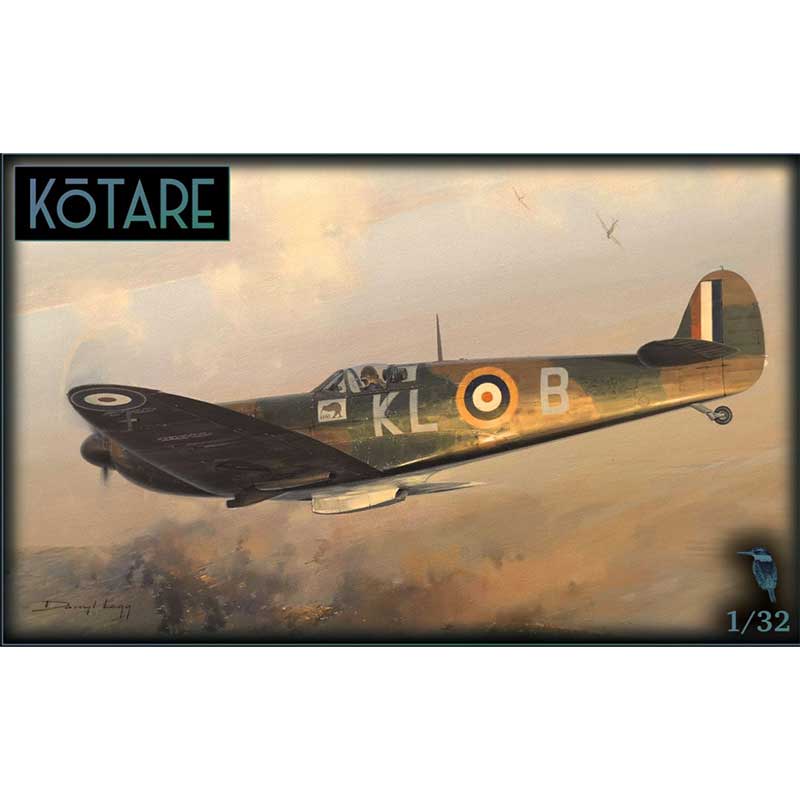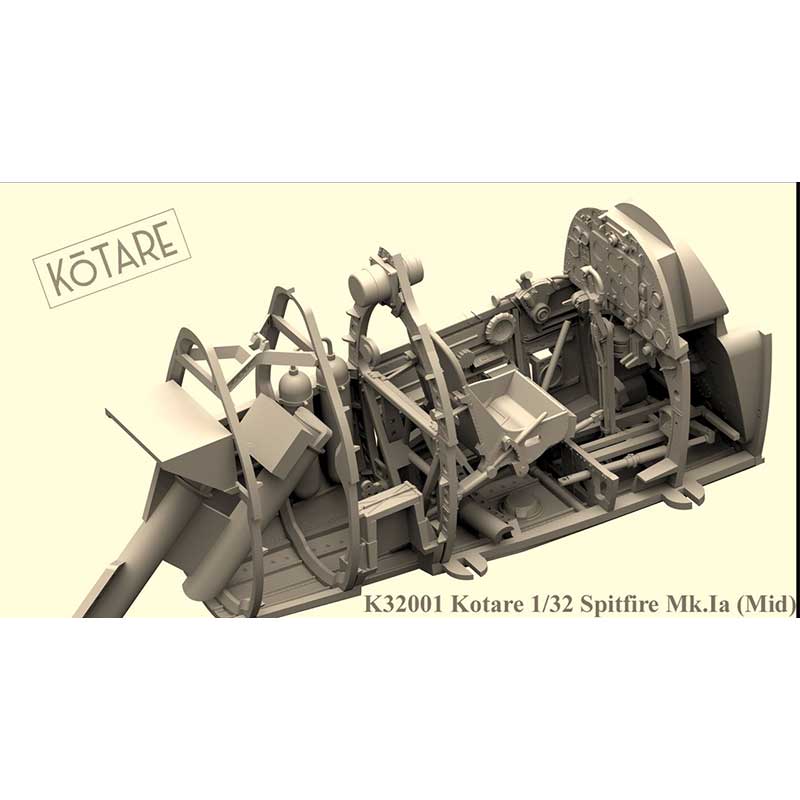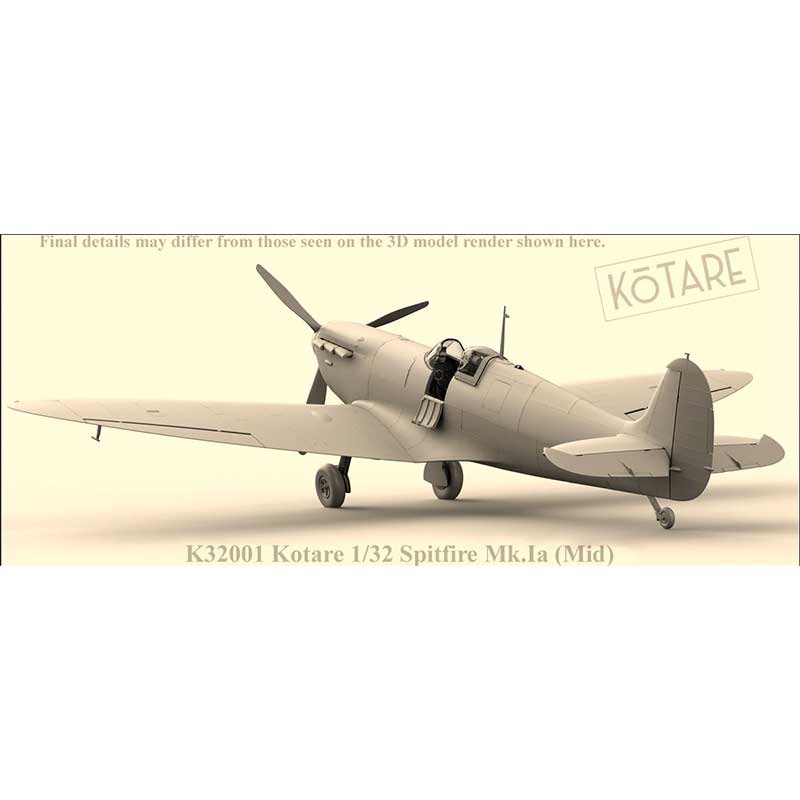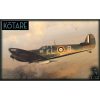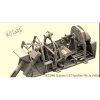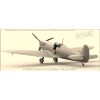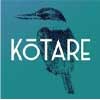1/32 Supermarine Spitfire Mk I (Mid) Kotare K32001
-117 high-quality injection moulded plastic parts.
-35cm wingspan.
-Optional De Havilland and Rotol propellers.
-Optional TR.9D and TR.1133 wireless controllers and aerials.
-Optional pilot’s seats with and without Sutton Type K harness detail.
-Optional open and closed cockpit doors.
-Optional open and closed canopy & hood.
-28 page fully illustrated instruction manual.
-Hand pump undercarriage retraction and wheel well jack detail.
-Wheels with weighted tyres featuring a correct alignment system.
-Parachute flare tubes.
-High quality Cartograf decals for 3 mid-production Spitfire Mk.Ia colour schemes;
The legendary Supermarine Type 300 “Spitfire” is undoubtedly one of the most famous, and perhaps the most beautiful, aircraft of all time. Designed from 1934 under the guidance of Supermarine Aviation Works’ chief designer Reginald Mitchell, Joseph Smith and “Alf” Faddy, the 990hp Rolls-Royce Merlin “C” powered prototype first flew on 5 March 1936. It was immediately obvious that it was something very special and an initial production order was placed in early June 1936 for 310 aircraft. Numerous delays at Supermarine and many of the approximately 150 sub-contractors ensured that the first production Spitfire was not completed until mid-May 1938 and the final aircraft from the order was only delivered in September 1939.
Early production Spitfire Mk.I in the K9### & L10## serial number range (completed between May 1938 and September 1939), were initially powered by a 1030hp Rolls-Royce Merlin II engine and featured a 2-blade fixed pitch propeller, 8 Browning .303″ machine guns, triple ejector nozzle outlet exhaust manifolds, a tall un-tapered aerial mast and a rear fuselage adorned with raised rivets for ease of construction. The main planes and front of the fuselage were flush riveted and puttied and sanded smooth for improved performance. Numerous improvements were introduced throughout production, most of which were eventually retrofitted to earlier aircraft which included gun heating, Rolls-Royce Merlin III engine, 3-blade dual-pitch DeHavilland propeller, exhaust manifolds of simplified construction, a taller canopy hood for improved visibility, armoured windscreen glass and protective plating over the upper fuel tank which necessitated shortening the engine cowlings slightly.
Mid production Mk.Ia in the N3### & P9### serial number range (completed between September 1939 and April 1940), saw the introduction of an improved lever-operated “dual position” cockpit door catch, reflector gun sight, tapered aerial post, voltage regulator positioned behind the pilot’s headrest and a constant speed DeHavilland propeller. Selected aircraft received a constant speed Rotol RX5/1 propeller and the temporary installation of the TR.1133 VHF radio, which did not require an external aerial wire.
Late production Mk.Ia in the R6####, R7### & X4### serial number range (completed between May 1940 and April 1941) and AR2## (from July 1941 to January 1942) saw the introduction of constant speed DeHavilland propellers and armour plates behind the pilot’s seat & headrest (which were retrofitted to earlier production aircraft) as well as engine driven undercarriage retraction. Other incremental changes were introduced such as a composite “plastic” seat, fire-proof bulkhead, revised “raised rivet” radio access door, station keeping lights in the fuel tank plating, re-installation of the TR.1133 VHF radio and saw the elimination of the gauge for the top fuel tank, fuel pressure gauge, priming cock and front parachute flare tube. Some Mk.I were armed with 2 Hispano 20mm cannons and were designated the Spitfire Mk.Ib (at which time the 8 gun armed aircraft was re-designated the Mk.Ia). The cannons proved to be so unreliable that the Mk.Ib was withdrawn from service until improvements had been made in late 1940. Numerous engine, airframe and armament improvements were made to the Spitfire before production ceased in 1948, by which time over 22000 had been produced in 2-dozen variants with the most notable being the 1030hp Mk.I, 1470hp Mk.V, 1720hp Mk.IX, 2035hp Mk.XIV, the photo-reconnaissance Mk.XI and the navalised Seafire Mk.III.
Spitfire Mk.I colour schemes are surprisingly varied and complicated. Interior areas were primed with light grey before being painted aluminium, except for the cockpit between frames 8 & 11 which was painted in a colour described as “Supermarine green” and “apple green”. Note that this is different from the paler, greyer, “Grey Green” (of which various colour mixes have additionally been noted) used on later production Spitfires built by other manufacturers. Major internal components supplied by sub-contractors could be delivered in various shades of grey-green or aluminium or even black.
The underside paint finish varied greatly throughout Mk.I production and service, initially being painted aluminium until late April 1939 when the port side was painted Night (black) and the starboard white (split along the centreline). Then from late February 1940, supposedly all “white” except for the port main plane (only) which was Night, although photographic evidence indicates that the undersides of the nose, rear fuselage and tailplane were usually painted with aluminium. From June 1940 the undersides were supposed to be painted “Sky Type S…duck egg bluish green” but sky grey and sky blue also appear to have been used and then from November 1940 the port main plane (only) was again finished in Night. Aircraft were re-painted in various interpretations of these specifications in the field as time and supplies of paint (including local mixes) allowed, which ensured that a wide variety of finishes were possible.
Contemporary photos confirm different shades of Dark Earth and Dark Green (even on the same airframe) which were applied with a hard demarcation line. Spitfire Mk.I camouflage was applied in 2 designs, the A and B schemes which were mirrors of each other. Spitfire sub-assemblies were usually supplied pre-painted so a single aircraft could exhibit a variety of shades, and sometimes the camouflage pattern would not match perfectly from one sub-assembly/component to the next. Additionally, extensive weathering and re-painting also helped ensure that a wide variety of tonal differences could be seen. The fabric covered rudder, elevator and ailerons were undercoated in red-brown dope before being painted and frequently appear paler than the adjacent camouflaged metal parts. Therefore, unfortunately, there is no “one true” Dark Earth, Dark Green, Sky Type S or interior grey-green paint colour suitable for all Spitfire Mk.I models so, while we have tried our best with our paint suggestions, there is no doubt many will disagree with us. Which is OK

